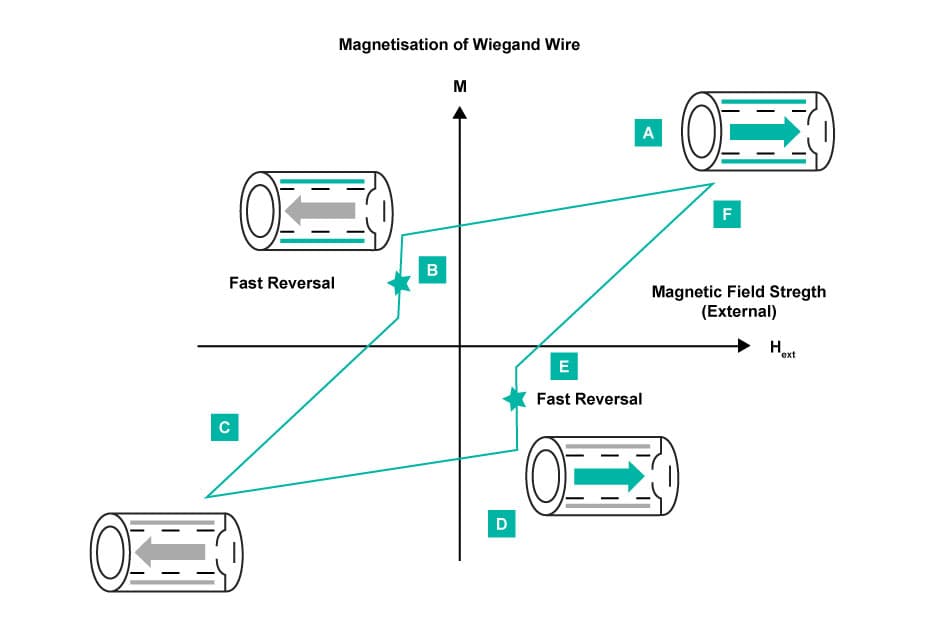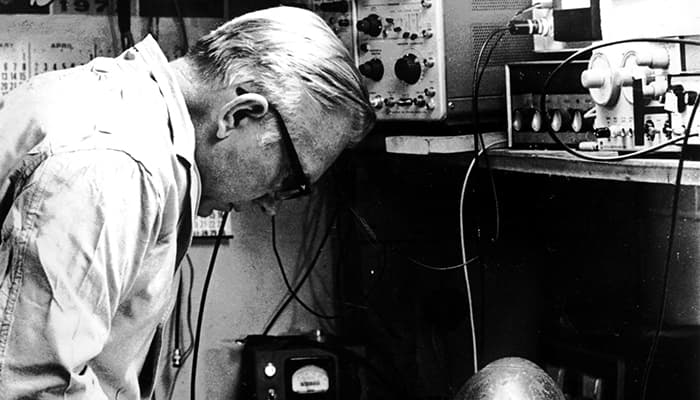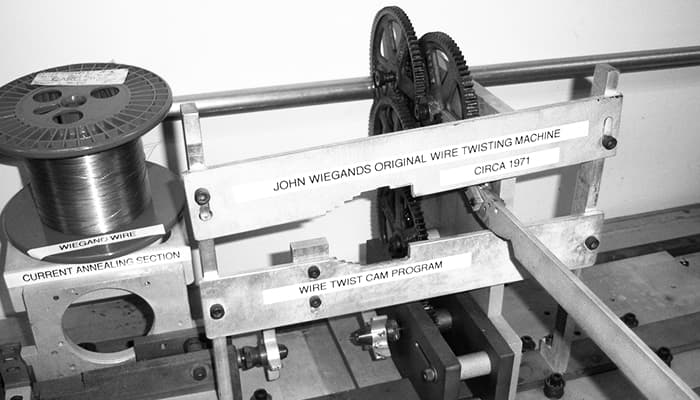
The Wiegand Effect Explained
Wiegand Working Principle

Wiegand sensors offer bipolar magnetic sensing without the need for any external voltage or current to be applied. The unique material properties of the sensor mean that consistent pulses are produced with every incidence of magnetic field polarity switching. In addition to magnetic sensing, ultra-low power electronics can be powered by harvesting the energy of a single pulse. Alternatively, successive pulses can be stored to off set the energy demand of circuits, or used to ‘wake-up’ intermittently powered electronic circuits. This makes it the perfect magnetic sensor for low-power and energy-saving applications.
Download Spec Sheet e-Whitepaper Wiegand Technology
How is the Wiegand Effect Different?
The electric pulse generated by a Wiegand wire is very brief, but its strength stays nearly constant, regardless of how quickly or slowly the external magnetic field changes. This is what makes the Wiegand effect special: while simple dynamos – which also use electromagnetic induction – are effective at converting rotary motion into electrical energy, their output power varies with the speed of rotation. When a dynamo is turned slowly, power levels can be too low to be useful. With a Wiegand wire however, the amount of electrical energy generated with each reversal of the magnetic field remains consistent over a wide range of speeds.

With recent enhancements to the energy output from Wiegand devices and the emergence of a new generation of ultra-efficient electronic chips for wireless communications, the technology is showing significant promise, especially in the exciting new area of the Internet of Things (IoT).
Do you have any questions or ideas how the Wiegand technology can be used in your application? Our technology experts are always happy to answer your questions or discuss any ideas you have.
Contact UsHistory of Wiegand Technology
The Wiegand effect is a physical phenomenon discovered in the 1970’s by John Wiegand, an American inventor who found that by repeatedly stretching and twisting a piece of ferromagnetic wire, he could alter its magnetic properties. When a sample of “Wiegand wire” is exposed to a reversing external magnetic field, it will initially retain its original magnetic state. However, when the strength of the external field reaches a critical threshold, a region of the wire that is magnetically soft will undergo an abrupt reversal of its polarity.


This transition takes place within a few microseconds and can be harnessed to induce a pulse of electric current in a fine copper coil wrapped around the wire. The combination of a short length of Wiegand wire and a surrounding copper coil is referred to as a Wiegand sensor. These are available commercially from UBITO in SMD (surface mountable device) packaging
Manufacturing Wiegand Wire
Wiegand wire is produced through a process that involves annealing a spool of Vicalloy wire (an alloy of vanadium, iron, and cobalt), then simultaneously stretching and twisting the wire. This aggressive cold working alters the crystalline structure of the metal and creates two regions – an inner core and outer shell – with significantly different levels of magnetic coercivity. Coercivity is a property of ferromagnetic materials that defines how easily the material can be magnetized by and external magnetic field. Magnetically soft materials, such as mild steel, have low coercivity and change their magnetic state easily. Magnetically hard material, such as the alloys used to make permanent magnets, will retain their magnetic state unless they are exposed to very strong external fields. The interaction of these two regions causes the wire to have a high level of magnetic hysteresis. The ‘recipe’ for producing a satisfactory batch of Wiegand wire was determined by John Wiegand and his collaborators through trial and error. The machine that they developed to produce Wiegand wire features a series of rotating frames that stretch, twist, then untwist the wire at various rates. This machinery was acquired by FRABA, along with John Wiegand’s lab notes. Since then, research carried out by FRABA and its partners has automated this process and optimized it for quality and consistency.




